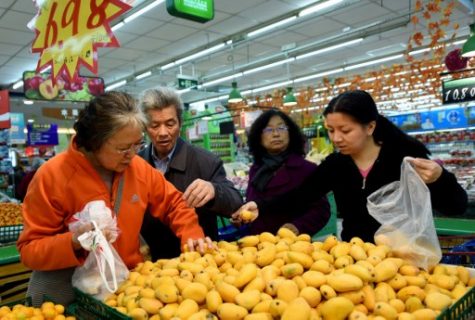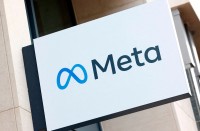
BEIJING, China (AFP) — Prices for goods at the factory gate in China jumped in March, the government said Wednesday, in a positive sign of strengthening demand for the world’s second-largest economy.
The producer price index (PPI) rose 7.6 percent year-on-year in March, according to the National Bureau of Statistics, slightly beating economists’ expectations of a 7.5 percent increase in a Bloomberg News survey.
Factory gate inflation “has eased,” NBS analyst Sheng Guoqing said in a statement, noting that March’s figure fell back from a 7.8 percent increase in February after five months of expansion.
The February figures reflected the fastest increase since September 2008, raising hopes that the pick-up in prices could trickle down to other economies.
For years the world economy has been mired in tepid inflation or deflation which, if persistent, tends to be bad for industrial prospects and economic growth because customers delay purchases in hopes of getting cheaper deals in the future, starving companies of business and funds.
China’s economy, a vital engine of global growth, expanded 6.7 percent for all of last year, the slowest rate in a quarter of a century. But a slight uptick in the last three months of 2016 provided signs of stabilisation.
The upward trend in the prices for goods at the factory gate is a positive signal, Dariusz Kowalczyk at Credit Agricole SA told Bloomberg News.
“It looks like there’s a lot of inflation momentum at the producer level, which is good because they’ll have higher profits and more money to invest,” he said.
“Stronger industrial recovery will continue to boost confidence in the economy and investment,” Li Wei of Commonwealth Bank of Australia told Bloomberg.
But the coming months will likely see a decrease in producer price inflation “as base effects become less favourable and economic activity begins to cool on the back of a tighter policy stance,” Julian Evans-Pritchard of Capital Economics said in a research note.
“Those anticipating a further reflation in China are likely to be disappointed.”
‘Benign inflationary pressures’
Wednesday’s reading follows data showing a further expansion in factory activity driven by a pickup in production and demand last month, while economic growth came in slightly better than expected at the end of 2016.
Beijing has said it wants to reorient the economy away from relying on debt-fuelled investment and towards a consumer-driven model, but the transition has proven challenging, leading to the slower growth readings in recent years.
The consumer price index (CPI), a key gauge of retail inflation, rose 0.9 percent in the month, the data showed, compared to a 0.8 percent increase in February.
The figures were affected by a drop in food prices, while prices for medical care, housing, education and entertainment, and transportation and communication have increased, NBS’s Sheng said.
Consumer price inflation is expected to rise in the coming months “due to pass-through from high property prices and the high PPI,” Zhao Yang of Nomura said in a note.
“Overall, inflationary pressures are benign.”
The still-strong PPI and the stable CPI outlook “allows the PBoC to focus on deleverage,” David Qu of ANZ Research noted.
“The PBOC’s efforts to edge rates higher reflect concerns about leverage and yuan weakness,” according to Tom Orlik and Fielding Chen of Bloomberg Intelligence.
High leverage in China, where fast-growing credit financed a real estate construction frenzy and overcapacity in related industries, has raised concerns about corporate efficiency and profitability, bank asset quality, and is thought to pose financial risks.
“At this point, inflation remains a secondary consideration.”







